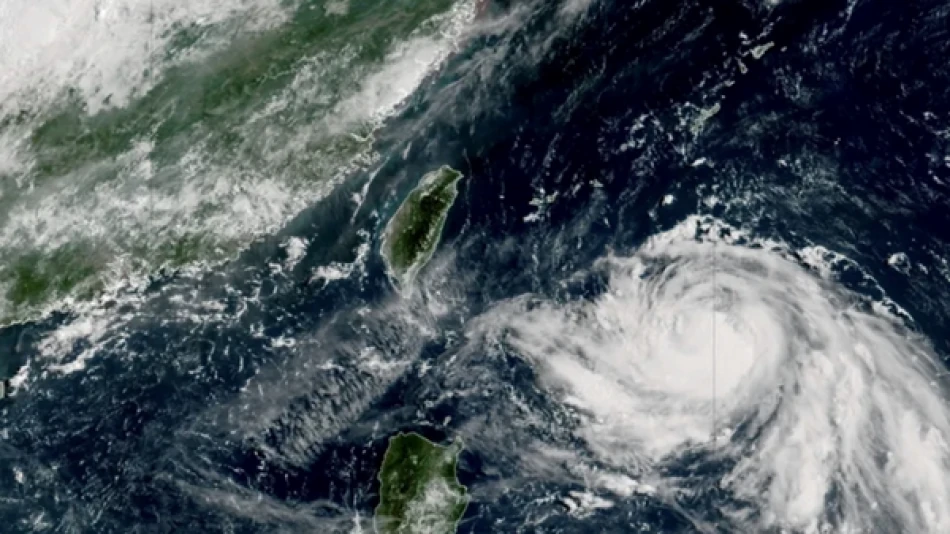
Thousands Evacuated as Powerful Typhoon Hinnamnor Approaches Taiwan
Taiwan Braces for Double Hurricane Hit as Typhoon Budol Threatens Flood-Ravaged Island
Taiwan faces a dangerous one-two punch as Typhoon Budol approaches Wednesday, forcing the evacuation of 2,000 residents from regions still recovering from recent Hurricane Danas damage. The storm threatens to compound existing flooding challenges across central and southern Taiwan, testing the island's disaster preparedness infrastructure during an unusually active typhoon season.
Military Mobilization and Transport Shutdown
Taiwanese authorities have deployed 31,000 soldiers for rescue and relief operations, signaling the government's expectation of significant damage. The scale of this military deployment rivals responses to major natural disasters in the region, including Japan's preparations for similar Category 2-3 typhoons.
Both major domestic carriers, Uni Air and Mandarin Airlines, have canceled all Wednesday flights, effectively isolating the island's air transport network. This complete shutdown approach mirrors Singapore's and Hong Kong's aggressive flight cancellation policies during severe weather events, prioritizing passenger safety over economic losses.
Storm Track and Intensity Projections
Budol is expected to make landfall along Taiwan's sparsely populated southeastern coast before crossing toward the Taiwan Strait. The Central Weather Agency forecasts sustained winds of 133 km/h with gusts reaching 166 km/h, placing it in the upper range of Category 2 intensity on international scales.
High-Risk Zones Identified
Meteorologist Chu Mei-lin identified the most vulnerable areas as Hualien and Taitung provinces in the east, Chiayi province centrally, and the southern regions including Kinmen islands. Kaohsiung, Taiwan's second-largest city, faces particular concern with 400-600mm of cumulative rainfall expected between Tuesday and Thursday—equivalent to several months of normal precipitation compressed into 72 hours.
Compounding Disaster Challenges
The timing of Budol creates a compounding crisis scenario. Large swaths of central and southern Taiwan remain waterlogged from Hurricane Danas and recent heavy rains, meaning soil saturation levels are already critical. This increases landslide risks in mountainous areas and reduces the ground's capacity to absorb additional rainfall.
The 1,100 residents being evacuated from Kaohsiung's mountainous districts reflect lessons learned from Taiwan's deadliest typhoon, Morakot in 2009, which killed over 600 people primarily through landslides in similar terrain.
Regional Context and Climate Patterns
Taiwan's current typhoon season intensity mirrors broader Pacific weather patterns that have produced more frequent severe storms across the region. The Philippines, Japan, and eastern China have all experienced above-average typhoon activity this year, suggesting climate change may be intensifying storm formation in Pacific waters.
Unlike mainland China's approach of mass evacuations often exceeding 100,000 people, Taiwan's targeted 2,000-person evacuation reflects more precise meteorological modeling and established community disaster protocols developed over decades of typhoon management.
Economic and Infrastructure Implications
The storm threatens Taiwan's critical semiconductor manufacturing region, though major facilities like TSMC have robust weather protection systems. However, the agricultural sector in affected southern provinces faces potential crop losses during harvest season, which could impact food prices regionally.
Taiwan's disaster response efficiency will be closely watched by regional neighbors as a benchmark for small-island nation preparedness, particularly given the island's advanced early warning systems and coordinated military-civilian response protocols.
Most Viewed News

 Layla Al Mansoori
Layla Al Mansoori






